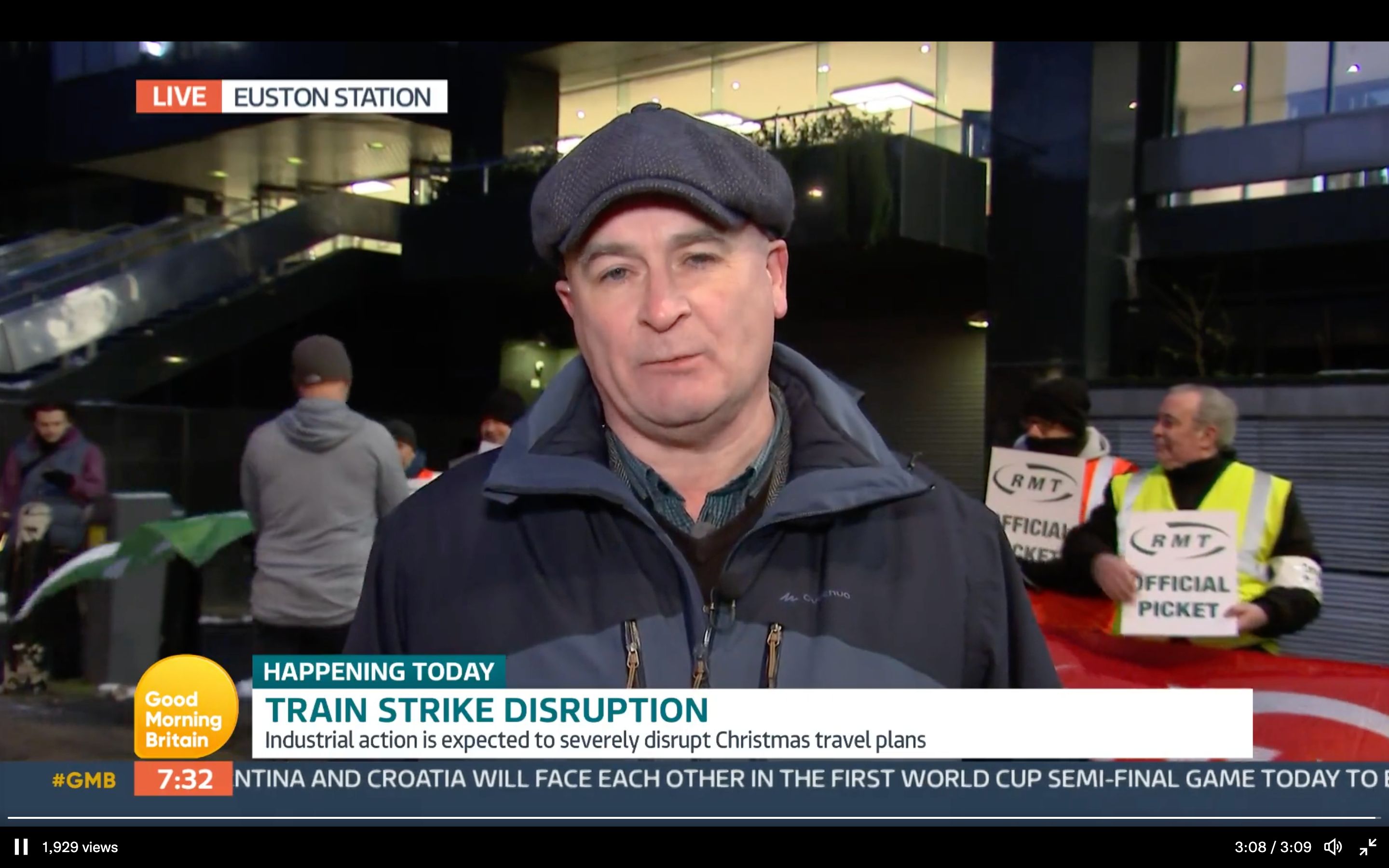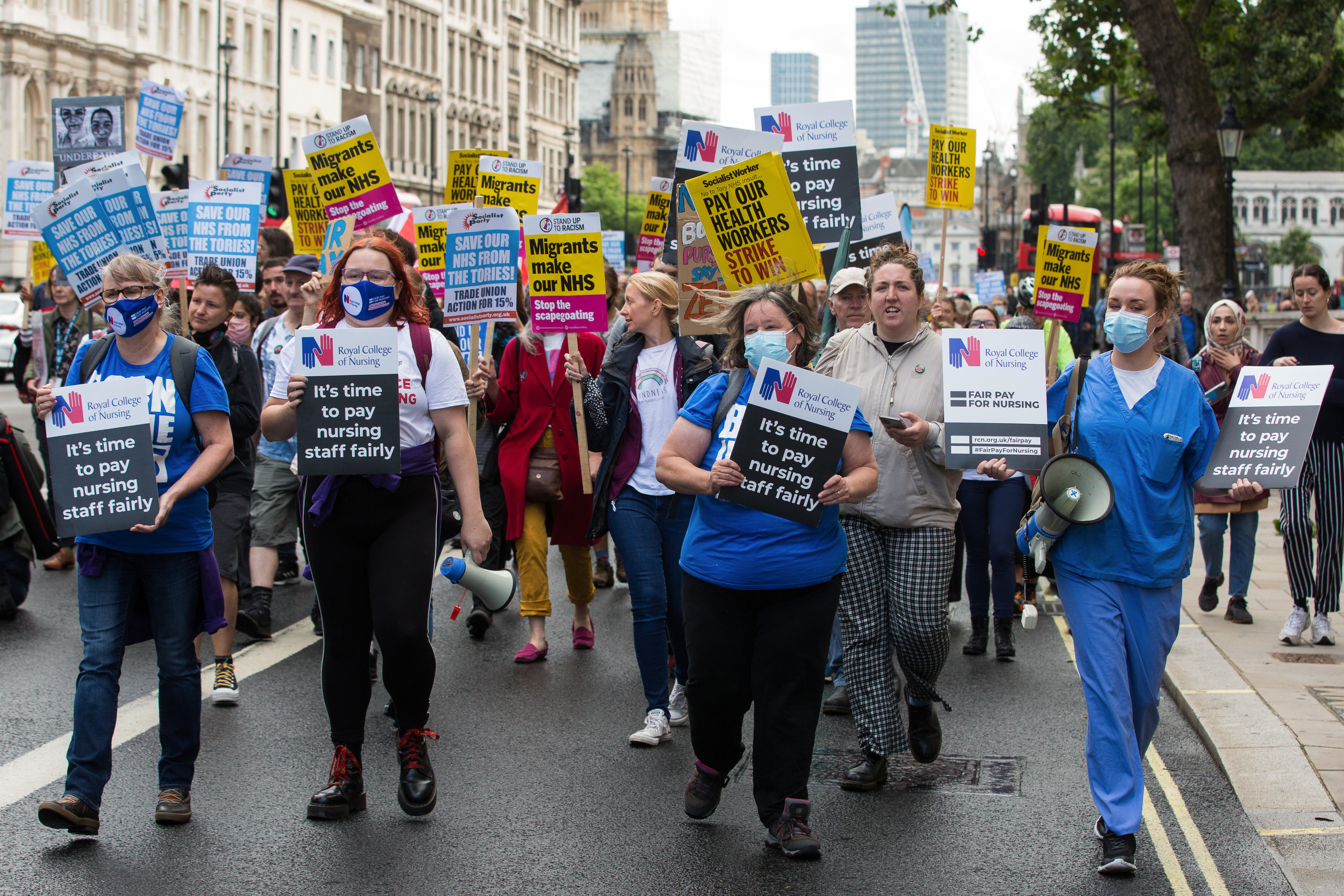
The government has repeatedly refused to meet striking workers’ pay demands by claiming it would cost too much.
There are set to be strikes on every single day for the rest of the year, bringing the health industry, national transport and postal services to a standstill (to name just a few sectors), as employees walk out over years of stagnant pay.
In response, Downing Street has just repeatedly claimed this would cost the taxpayer £28 billion.
But is that accurate? Here’s why one expert said it was just “dodgy numbers”.
What does the government claim?
Prime minister Rishi Sunak has said that the government will only accept the advice of public sector pay review bodies.
He also added: “What I’m not going to do is ask ordinary families up and down the country to pay an extra £1,000 a year to meet the pay demands of the union bosses.”
Health secretary Steve Barclay then repeated these numbers, telling BBC Breakfast: “If everyone in the public sector had a pay rise in line with inflation, it would cost an extra £28 billion, an extra £1,000 per household.”
Chancellor Jeremy Hunt has also warned that increasing all public sector wages would “lock in” high inflation.
No.10 has claimed: “It is unaffordable to match inflation as it currently runs. If we were to do so, we firmly believe that would embed inflation and act against everyone’s interests.”
“What I’m not going to do is ask ordinary families up and down the country to pay an extra £1,000 a year to meet the pay demands of the union bosses.”
Prime Minister Rishi Sunak says he is a “looking at tough new laws” to "minimise disruption" from industrial action. pic.twitter.com/dhFzKLw9It
— Channel 4 News (@Channel4News) December 9, 2022
Where did the government get these numbers from?
When approached by the BBC about its calculations, the government said it looked at the total cost of public sector salaries for 2021 to 2022 – this came to £233 billion.
Then, it increased the number by around 5% to account for the public sector pay deals already in place, taking it to £245 billion.
Then it increased it by 11% – to match the inflation figure for October 2022 – which seems to take a potential pay hike to an additional £27 billion cost.
The government added an extra £1 billion for “assumptions on pay drift and workforce growth”, too.
The £28 billion was subsequently divided by the UK’s 28 million households in the UK, working out to £1,000.
So, what’s wrong with these calculations?
It doesn’t use the average inflation rate
The government bizarrely chooses only the inflation rate from October - which is at a 41-year high - to calculate the cost to the taxpayer.
But, the Office for Budget Responsibility (OBR) thinks average inflation for this year and next year will come to around 10%.
And as there are 5.7 million employees working in the public sector right now, their wages altogether came to £233 billion in 2021.
Workers are indeed calling for their wages to be increased in line with inflation, so that would mean the total cost to the government would increase by £23 billion – if looking at the average inflation rate.
This would still work out to around £820 per household – not £1,000 – according to the BBC’s reality check team, as there are 28 million households in the UK.

Doesn’t discount the already agreed pay rises
The government was already planning to increase the public sector wage by around 3% for 2022-23, as it revealed last autumn.
The IFS (Institute for Fiscal Studies) thinks that if the wages were increased to match 2021′s average inflation rate of 10%, and the 3% rise was included into the sums, increasing wages would cost £18 billion.
This would work out to around £640 per household.
Not using the inflation rate for next year
The IFS has noted that the inflation rate used by the government here will have changed substantially by 2023-24, so it is effectively using a historic rate to calculate future stats.
The Office for Budget Responsibility (OBR) thinks by next year, the average pay inflation will reach 5.5% instead.
Even when the IFS looked at using the government’s method to calculate these numbers, using 5.5% inflation instead would take total cost would be “more like £14 billion” – making the PM’s claim that it will cost an extra £1,000 still excessive.

Excluding tax
BBC’s Reality Check also pointed out that the government would get around a third of the pay increase back through tax, if the public sector’s pay deal was connected to inflation.
As IFS’ Ben Zaranko noted, this would “further reduce the net cost” of increasing public sector pay.
Zaranko explained: “Dividing [the total cost to the government] by the number of households and implying that every ‘ordinary’ household would have to pay that amount extra in tax is a bit misleading: it obviously depends on which taxes were increased.”
In his Twitter thread, the economist added: “None of this is to say anything about the arguments for/against a higher public sector pay award. There’s a proper debate to be had. But we shouldn’t have it on the basis of dodgy numbers.”
... if we're talking about the *cost to the government*, and what it might mean for households, we also need to take into account the fact that some of the higher pay would come back to the Treasury in the form of higher tax payments. That would further reduce the net cost.
— Ben Zaranko (@BenZaranko) December 9, 2022


